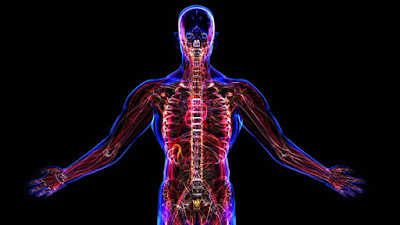UNIT 1- CONTENT:-
CHAPTER 2:- CELLULAR LEVEL OF ORGANIZATION
- Structure and functions of cell, transport across cell membrane, cell
division, cell junctions. General principles of cell communication,
intracellular signaling pathway activation by extracellular signal
molecule, Forms of intracellular signaling: - a)Contact-dependent
- b)Paracrine
- c) Synaptic
- d) Endocrine
STUDY TIPS:-
- CHAPTER 2- CELLULAR LEVEL OF ORGANIZATION
- It is considered to be one of the most important chapter in HAP 1 and so we suggest you to give more important to it.
- Every topic is worth of question and so use proper notes and standard Books to understand this chapter properly.
- If your studying for exam right now, I will suggest you few exam tips to study and remember Human Anatomy & Physiology subject easily, so check out them- HAP-I EXAM & STUDY TIPS
REVIEW QUESTIONS:-
CHAPTER 2 :- CELLULAR LEVEL OF ORGANIZATION
MULTIPLE CHOICE QUESTIONS
1. Endoplasmic reticulum is the center of -
(a) Excretion
(b) Blood formation
(c) Carbohydrate synthesis.
(d) Protein synthesis.
2. The network of endoplasmic reticulum is present in the.....
(a) Chromosome
(b) Nucleolus
(c) Cytoplasm
(d) Nucleus
3. Nucleus is the centre of.....
a) Digestion
(b) Protein synthesis
(c) Excretion
(d) Gene control.
4. Which of the following cells are without endoplasmic reticulum....
(a) Amphibian oocytes
(b) Matured erythrocytes of mammals
(c) Matured oocytes
(d) Mammalian leucocytes of mammals.
5. Chromosomes are present in :
(a) Nucleolus
(b) nucleus
(c) Cytoplasm
(d) Lysosomes
6. Mitochondria contain:
(a) DNA only
(b) RNA only
(c) Ribosomes only
(d) All the three
7. The name "mitochondria" was given by :
(a) Vira
(b) Benda
(c) Flemming
(d) Palade
FILL IN THE BLANKS:-
1. ATP is formed in ….……
2. Power houses of the cells are the …..
3. Centriole plays an important role in the formation of ............during cell division.
4. Ribosomal RNA is stored in........
5. Yolk storing bodies is the special function of......
6. Components of endoplasmic reticulum, Golgi bodies and ribosomes are collectively called.......
7. Cell membrane is a part of animal.....
ANSWERS TO MULTIPLE CHOICE QUESTIONS
1. (d)
2. (c)
3. (d)
4. (c)
5. (b)
6. (d)
7. (b)
8. (d)
ANSWERS TO FILL IN THE BLANKS:-
1. Mitochondria
2. Mitochondria
3. Spindle
4. Nucleolus
5. Mitochondria
6. Microsomes
7. Cell
SHORT ANSWER QUESTIONS:-
1. What are microsomes ?
2. Write the functions of mitochondria.
3. Name the various types of cell organelles seen in an electron microscopic structure of a typical animal cell and give the location of chromatin material, endoplasmic reticulum and nucleolus.
4. Write a note on the composition and role of nucleus in the cell.
5. Write short notes on an animal cell.
LONG ANSWER QUESTIONS
1. Describe the ultrastructure of a typical animal cell.
2. Draw a labelled diagram of the animal cell as seen under electron microscope and write its functions.
3. Describe the structure and functions of mitochondria with suitable diagrams.
REFERENCE BOOKS :- REFERENCE BOOKS PDF FREE DOWNLOAD FOR HAP-1
REFERENCE VIDEOS:- REFERENCE VIDEOS FREE DOWNLOAD FOR HAP-1
IGNORE:-
#lastbenchPharmacist , #bpharma1stsemesternotes, #bpharma1stsemesterlecture, #bpharma1stsemesternotesdownloadpdf, #bpharm1stsemnotes, #bpharm1semesternotes, #bpharmacy1stsemnotes, #bpharmacy1stsemesternotes, #bpharmanotes.com, #bpharmacy1stsemesternotesdownloadpdf, #bpharma1stsemesterhumananatomyandphysiologynotes, #bpharma1styearbooks, #pharmacyadda, #humananatomyandphysiologybpharmacy1styear, #bpharmanotes,#bpharmanotespdf, #bpharmacynotes.com






No comments:
Post a Comment
Note: Only a member of this blog may post a comment.